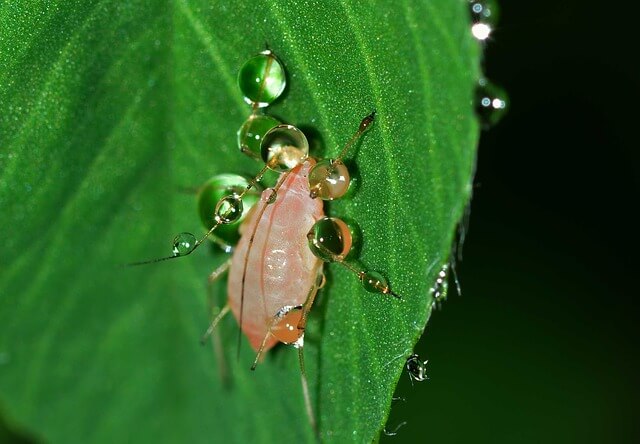Now that spring is in full swing, caring for your landscaping is a top priority. With the warmer weather and nicer days (minus the exception of those last few snow storms trying to hang on from the winter), it is a great time to work on making sure your plants, shrubs and more are at their best. May is the ideal time to start treating your landscaping with aphid and mite treatments. In addition, it is also the time to use elm leaf beetle, elm leaf weevil and elm leaf minor treatments as well. Learn more about aphid and mite damage and treatments and other landscaping tips to prepare you this spring.
Aphid/Mite Damage and Treatments
Aphids and mites are common pests that can create wilting plants in your yard. While they are very host specific, there are over 200 species in Colorado alone. In some cases, it can make it hard for newer plants to grow. They typically will suck out all of the nutrients by feeding on the leaves and sucking the sap out for themselves. They are small, shaped like a pair and are typically yellow, green, black, white or orange. While aphids can be seen, mites are much harder to see because of their small size. They typically feed on plants and in some cases, animals and people. The best way to keep aphids from destroying your plants is to take on preventative measures. You can spray treatments on your lawn and landscaping this spring to avoid an infestation. Be cautious to look out for the warning signs to make sure your plants are not damaged by aphids. Learn more about how to identify and get rid of aphids.
Elm Leaf Beetle, Weevil and Leaf Treatments
Elm leaf beetles are long in shape, have wings and are yellow in color. When elm trees have leaves that turn brown, or are losing leaves before the normal season, it is a sign that there is potentially an elm leaf beetle problem. Often times, elm insects and their feeding are the culprit of premature leaf drop. Elm leaf weevils are different than beetles. Smaller in size, these pests typically eat holes in leaves right around spring. In addition they lay eggs that hatch in the fall, leading to further damage. By spraying and treating your plants now, you can prevent damage.
Other Landscaping Tips
As spring has arrived, make sure you take time to care for your landscaping. Remove old mulch and re-mulch one to three inches around your plants. Make sure you leave space around the base of the plant so mulch is not right up against it or packed down tightly. Make sure you work with a local landscaping company and arborist on pre-treating your lawn and plant beds to avoid insects like aphids, mites and elm leaf pests.
For help caring for your plants, landscaping and trees, American Arbor Care has you covered. As you plan to enhance your landscaping, read more about spring tree fertilizations and insect treatments via soil injection for your Denver landscaping. Now is the best time to treat your plants, shrubs and trees to keep them in the best condition for spring. To see how we can help you, contact American Arbor Care in Denver, CO today.

